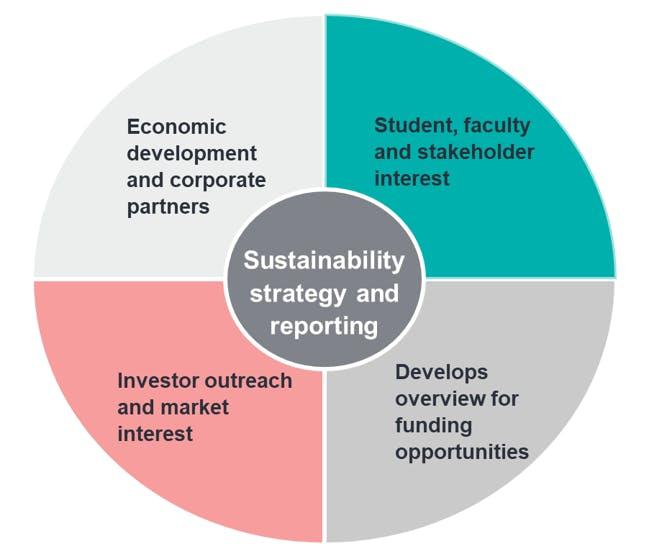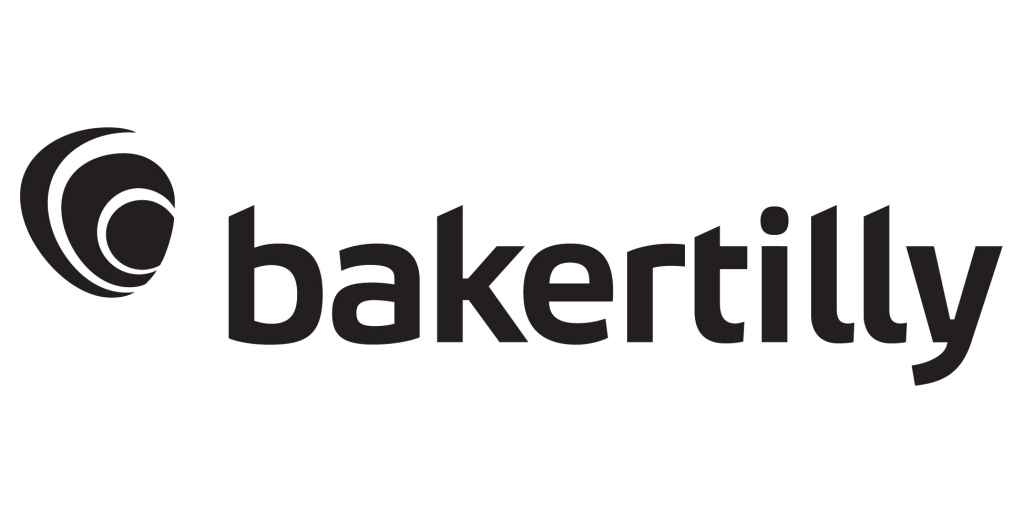Leveraging Sustainability Strategy and Inflation Reduction Act Credits To Optimize Capital Assets
Key takeaways from Baker Tilly’s higher education panel discussion at the 2024 NACUBO Annual Meeting

Authored by Christine M. Smith, David Erdman, Gideon Gradman
Higher education institutions nationwide are grappling with unprecedented challenges, including financial pressures caused largely by declining enrollment rates. Ensuring institutional sustainability on all fronts requires an intentional strategy to ensure resources are ample and appropriately aligned. At the 2024 NACUBO Annual Meeting, a panel of industry specialists from Baker Tilly, the University of Maine (UMaine) and the University of Wisconsin-Eau Claire (UWEC) addressed the specific issues faced and discussed strategies for positioning institutions for fiscal and environmental sustainability.
Our esteemed panelists
Dan Dixon, Director of Sustainability, University of Maine
David Erdman, Managing Director, Baker Tilly Municipal Advisors
Gideon Gradman, Managing Director, Energy & Infrastructure, Baker Tilly Capital
Christine Smith, Managing Director, Higher Education, Baker Tilly (moderator)
Kimera Way, CEO and President, University of Wisconsin – Eau Claire Foundation
Sustainability and why it matters for campuses
Sustainability in this context refers to both the sustainability of an institution as a viable option to its students (e.g., reputation, fiscal position, value) and sustainability as it relates to relying on renewable sources and alternative approaches to meet campus energy needs. According to the Princeton Review’s 2023 College Hopes & Worries Survey, 69% of 8,800 applicants indicated that information about a college’s environmental commitment would influence their decision to apply or enroll. Both students and investors are increasingly demanding such commitments. Sustainability and diversity, equity and inclusion (DEI) are interconnected and impact all facets of campus life.
Not only is there a growing demand for sustainability initiatives to support today’s higher education delivery models and evolving capital asset needs, but challenges related to sustainability are also becoming more pressing. Issues such as climate change, increasing natural disaster frequency, social justice concerns and shortages in quality-of-life resources are becoming more prominent. Higher education institutions are often catalysts for change and sustainability planning is emerging as a key priority. Implementing an effective and comprehensive sustainability plan can be costly in terms of budget, time and/or resources, which is why an intentional, highly operational and agreed-upon strategy is essential.
“Sustainability planning is essential. Students are calling for it and higher ed institutions are leading the change.”- Christine Smith, Managing Director Higher Education, Baker Tilly
University of Maine's success
The panel examined various funding sources and alternative revenue streams available to support environmental sustainability initiatives, particularly those involving renewable energy.
Assessing the potential eligibility of energy property components for a large project is a complex and labor-intensive process, with timing being a critical factor.
Baker Tilly assisted UMaine in evaluating the design of its central energy plant replacement to determine if it qualified for IRA tax credits. Ultimately, the decision was made that the cost—in terms of time lost—required for redesigning the facility to include eligible renewable sources and obtaining legislative approval was not justified. Thus, the University decided ultimately not to pursue the IRA energy tax credits.
In recent developments, the U.S. Department of Commerce awarded a historic $69 million grant to the Governor’s Office of Policy Innovation and the Future through the Inflation Reduction Act (IRA), as part of the state's 'Maine Won’t Wait' Climate Action Plan. This grant represents the largest funding Maine has ever received for addressing climate change.
They will focus on identifying and addressing coastal hazards such as future sea level rise, storm surges and extreme weather events. The initiative will explore innovative, nature-based engineering solutions to reduce risks to human and infrastructure systems. Maine Sea Grant will also work with the Maine Coastal Program to strengthen Maine’s Working Waterfront Coalition and develop a statewide working waterfront strategy.
UMaine’s efforts will include partnering with communities to assess their needs and connect them with scientific and engineering tools for climate resilience. University researchers will host educational workshops and collaborate with various stakeholders, including the Maine Climate Council, state and federal agencies, municipalities, research institutions, regional planning organizations, industry support groups and businesses. This is another example of how the University of Maine is serving as a community catalyst for sustainability initiatives.
UWEC Foundation collaboration
Following a generous land donation in 2014, in alignment with the University’s strategic plan and bolstered by strong student support, the Foundation set out to develop a new events center on the UWEC campus. The event center included a partnership with the Mayo Clinic to offer sports medicine and related therapy services on the premises, which also met their shared goal of increasing the level of trained health professionals in the region. An added benefit for the University was the ability to enhance enrollment via these new opportunities.
Further, a local group of entrepreneurs pledged a significant amount of funds to ensure the building's design included renewable energy components to heat and cool the building. Over 190 geothermal wells are in use to support the University and community in their commitment to environmental sustainability. As construction commenced, the project team discovered opportunities for IRA energy tax credits and worked with Baker Tilly to identify eligible energy property infrastructure costs that are estimated at between $2 and $3 million in energy credits. The University is working with Baker Tilly to qualify for those IRA credits.
Beyond the IRA alternative revenue impact on sustainability, UWEC needed to assess and manage financial, legal and tax-exempt status risks with such a large project. As part of UWEC’s reality and plan, the team created a risk management framework aligned to the broader strategy, elevated and enhanced risk response decisions, incorporated risk resource allocations, promoted collaboration to manage cross-functional risks and ensured compliance with all policies and procedures throughout project development. A key lesson learned from this project: planning prevents problems!
Today, the project is complete. The new events center, which accommodates 5,000 people and features a large indoor turf field, helps UWEC and its partners to meet sustainability objectives in several different ways.
Key considerations for sustainability strategy and financing
Universities are already managing a range of sustainability issues that are integral to their mission and success strategy. However, they face growing pressures from various stakeholders for greater transparency, comparability and proactive action on these topics. As higher education institutions’ sustainability efforts grow, it’s critical to share a compelling story to help stakeholders understand the institution’s commitment to sustainability, as well as fiscal, environmental and governance strategies. Environmental, social and governance (ESG) frameworks are becoming more prevalent on college campuses – and public companies are now required to comply with various reporting regulations.
As colleges and universities’ efforts around sustainability increase, it is helpful to develop your story for investors to better understand how your organization is specifically addressing sustainability.
Developing a sustainability and resiliency strategy and investor disclosure has several impactful uses:
Demonstrates plans and initiatives to corporate and business stakeholders in the community
Important to the attraction of employees and residents, particularly Gen-Z
Discusses operational risks and mitigation strategies
Session summary
Overall, deliberate action to drive institutional sustainability is more crucial than ever. Developing a sustainability strategy that incorporates diverse and strategic funding sources and partnerships is essential. Alternative revenue such as energy tax credits, (e.g., those under the Inflation Reduction Act), and other financing options can have a substantial impact on improving capital assets and fiscal position on campus. Funders, stakeholders and students now expect accountability for sustainable capital assets and operations.
For more information about credits offered under the Inflation Reduction Act, or to learn how Baker Tilly can help your institution with developing or refining your organization’s strategic sustainability plan, contact a Baker Tilly specialist or visit the website.

